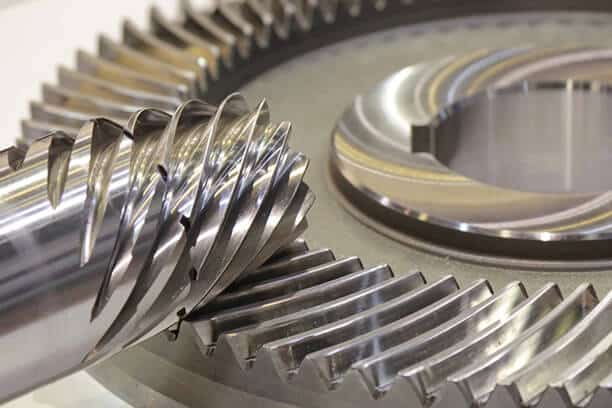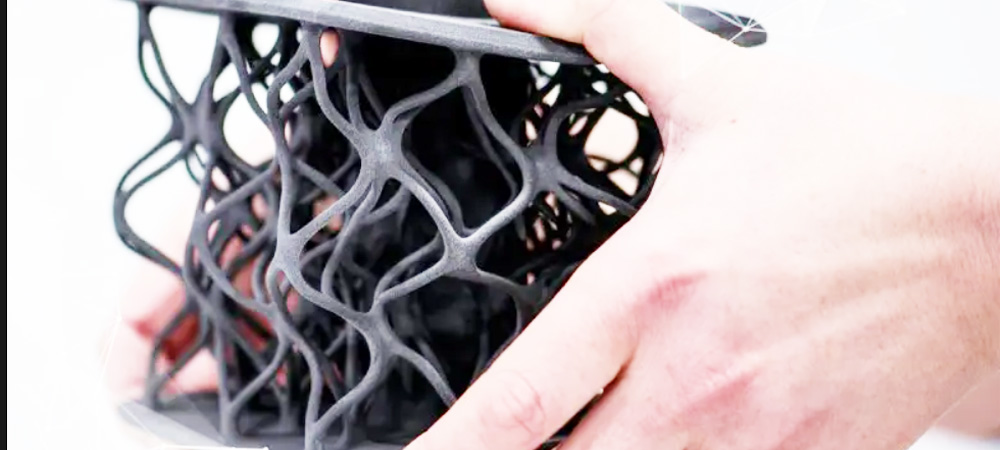Gears are essential components of engines; they are mechanical devices that provide a shift in the torque and speed of machines. There are several gears, each of which has its unique set of needs and standards. These criteria and specifications may range from very basic to very complicated.
Although it is common for a lot of gears to come together to construct sophisticated machines, this is not always the scenario. For instance, gears may be found in basic devices such as clocks, where they are used to control the pace at which the hands of the clock move. This post will go through the many uses of mechanical gears and explore the available types. Onward with the reading!
What are Gears?
Transmission of torque and speed is accomplished via the use of gears, which are revolving mechanical devices with teeth. Gears used in mechanical systems are often cylindrical and have sets of teeth surrounding the body. Transmission refers to the state of having two or more gears working in unison with one another. Alterations in speed or torque directly result from the power transmission.
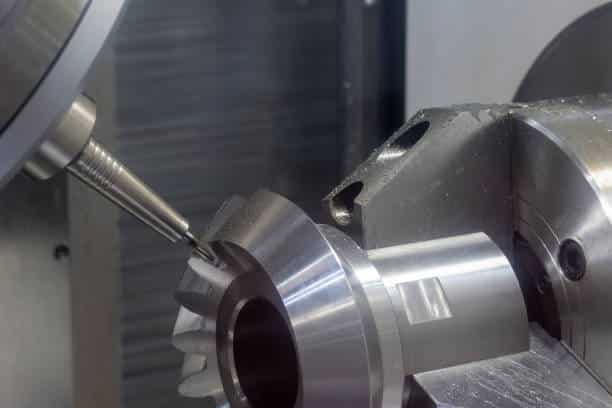
What are the Advantages of Gears?
- The mechanical properties of gears are very strong. Therefore, they can withstand higher loads.
- A change in velocity ratios is feasible with the help of a gearbox.
- They perform well at low velocities.
- Efficient power transmission.
- They are suitable for the transmission of high torque values.
- Gears only require daily lubrication, so little attention is paid to maintenance.
- They are highly durable, so the gear system can be used for a long time.
What are the Disadvantages of Gears?
- It may be noisy, especially at high speeds.
- They don’t fit when the axis is far away.
- Gears are not ideal for long-distance motion transmission.
- They are not flexible.
Different Types and Applications of Gears
When it comes to mechanics, classifying gears into different categories relies on the arrangement of their teeth, the function they provide, and the way in which motion is transmitted. The essential types of gear are shown below.
Spur Gear
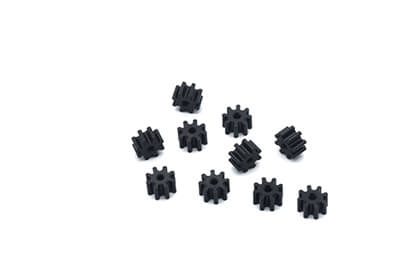
When the driving shaft and the driven shaft are parallel, a spur gear will transfer power within the same plane as the driving shaft. Spur gears have teeth that are aligned parallel to the shaft axis. Because of this, it can transfer power along a parallel shaft whenever it contacts another spur gear. One of the most popular kinds of gears, they are used in various industries, including automobiles, conveyor systems, gear pumps & motors, speed retarders, and other similar devices.
Applications of Spur Gear
This type of gear is widely used in an array of mechanical applications for its a variety of speed ratios such as power plant machinery, material handling equipment, clocks, pumps, watering systems, and laundry washers and dryers. Multiple (i.e. more than two) spur gears can well fit in a gear train to offer higher gear reduction if the application requires it.
Helical Gear
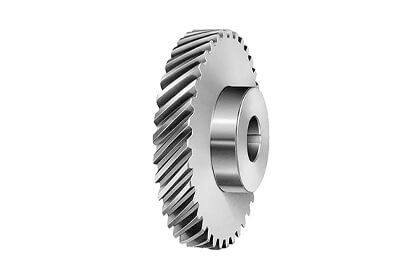
In opposition to spur gears, which have their teeth aligned parallel to the shaft, helical gears contain their teeth set at an inclination to the shaft. During transmission, several teeth come into contact with one another. As a direct consequence of this, helical mechanical gears are capable of carrying greater loads. Additionally, since the loads are spread more evenly, they produce fewer vibrations and sounds while in operation. Moreover, because there is less friction, they are subject to situations that reduce wear and tear.
The type of helical gear can be divided into:
- Screw Gear
- Herringbone Gear
- Single or Double Helical Gear
Applications of Helical Gears
- Automobiles
- Water pumps
- Mixers
Bevel Gear
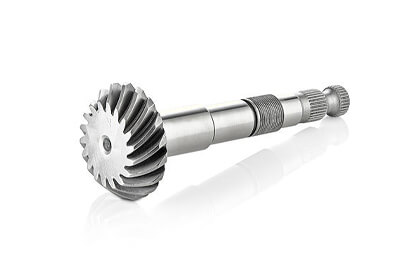
Bevel gears have a cone profile, and their teeth are arranged around the cone. They act as a force transmitter between shafts perpendicular to one another. This refers to shafts that meet at right angles (90 degrees). On the other hand, bevel gears are costly. They do not transfer a substantial torque for their size in the same way as parallel shaft configurations do.
The type of bevel gears can be divided into:
- Miter Gears
- Spiral Bevel Gears
- Crown Gears
- Zerol® Bevel Gears
- Hypoid Gears
- Straight Bevel Gears
Applications of Bevel Gears
- Watering systems
- Crushers
- Mixers
Worm Gear
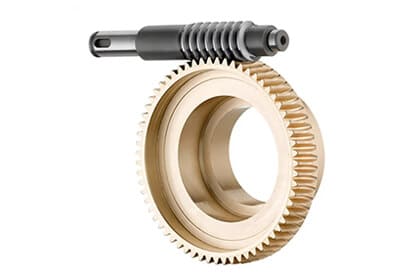
A worm gear has a cut in the form of a screw on the shaft (the worm) and meshes with another gear (worm wheel). This gear transfers power using shafts that do not intersect and form right angles instead. The gear works by establishing sliding contact with one another, which results in reduced friction and a smoother, less noisy rotation. Therefore, they are suited for use in applications that involve big shocks. However, because of their poor efficiency, their employment is limited to applications that need minimal power.
Applications of Worm Gears
- Small conveyors
- Packing equipments
- Farm machines
Rack and Pinion Gear
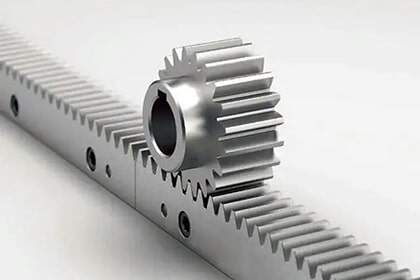
It’s not uncommon to see rack and pinion gear in pairs. They are made up of two circular gears, the pinion and the rack (a linear gear), which engage one another. They are able to convert rotary motion into linear motion. These gears are often seen in the steering systems of many types of vehicles. It is possible to utilize either straight or helical gears in a rack and pinion gear system.
Applications of Rack and Pinion Gear
- Weighing scales
- The steering system of automobiles
- Transfer systems
Epicyclic Gearing
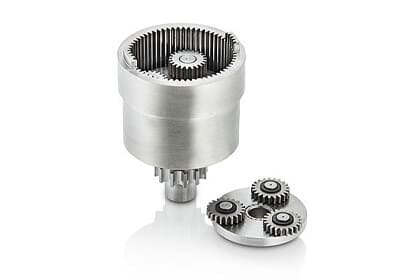
A pair of gears positioned so that one gear’s center rotates around the hub of the other gear constitutes an epicyclic gear train, often referred to as a planetary gearset. The pitch circles of the planet and sun gears roll without slipping because of a carrier that links their centers and turns them. An epicycloid path is traced by a point on the planetary gear’s pitch circle. The sun gear is immobile, and the planetary gear(s) revolve around it in this simple model.
Applications of Epicyclic Gearing
A frequent application of epicyclic gear trains is to accomplish a large reduction in a small space. Sometimes, this type of gearing is used in tractors and construction equipment to offer high torque to the drive wheels.
Internal Gear
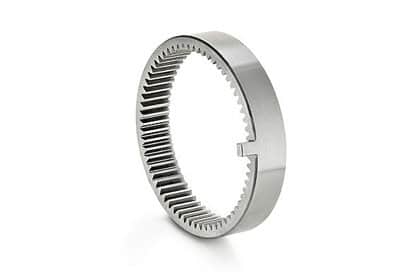
A gear with its teeth carved into the inside surface of a cylinder is called an internal gear—this kind of gear mates with spur gears. The typical hobbing machine used in manufacturing spur gears cannot be employed in its fabrication due to the form of the output. In most cases, it is produced using a gear shaper (also known as a gear shaping machine) that is outfitted with a pinion cutter.
Applications of Internal Gear
The most common application of internal gears is for planetary gear trains or gear reducers, consisting of a carrier, several spur gears (called planetary gears), and a central sun gear that rotate within the internal gear.
A Brief Conclusion of Characteristics of Gears by Type
| Types | Characteristics | Advantages | Disadvantages | Applications |
| Spur gear | Most common gear type Straight teeth cut or inserted parallel to the gear shaft Configuration for parallel axes Round gear body Compatible with spur gears, internal gears, or rack and pinion gears | High efficiency and accuracy Easy to manufacture No thrust Capable of undertaking high loads at high speeds | Gear teeth is subjected to high stress due to tooth profile design May cause noise at high speed | Automotive Clocks Small conveyors |
| Helical gear | Round gear body Use for parallel axis configuration Teeth twist at an angle around the gear body Available in single and double helical designs Available in right-hand and left-hand designs | Progressive engagement reduces shock loads Smoother operation with less noise Capable of handling larger loads | Less efficientMore complex designs and higher manufacturing costs Products with single helix design have high thrust, but double helixes do not. | Mixers Automobiles Water pumps |
| Bevel gear | Conical gear body Configuration for intersecting axes Available in spiral, straight, and Zerol® bevel designs | Spiral Bevel Gears: simplest bevel gear design, easiest to manufacture Spiral Bevel Gears: progressive tooth meshing, low shock loads, noise and vibration Zerol® Bevel Gears: quieter and smoother than straight bevel gears, and capable of rotating in both directions, unlike spiral bevel gears | High pressure, impact, and noise More complicated design Higher manufacturing costs | Crushers Mixers Watering systems |
| Worm gear | Gear pair is made up of a circular gear and a screw-shaped gear For non-intersecting and non-parallel axis configurations | Self-locking mechanism Large gear reductions and gear ratios Quiet and smooth operation | Lots of friction Low transmission efficiency | Small conveyors Farm machines |
| Rack and pinion gear | Gear pair consists of a gear rack and a cylindrical gear Use for parallel axis configuration Rack with spur or helical gears Changes rotary motion to linear motion or vice versa | Simple design Easy to manufacture Capable of handling larger loads | There is a lot of backlash between the meshing teeth Due to the tooth profile design, the friction and pressure of the gears are high Transmission cannot continue indefinitely in one direction | Weighing scale Automotive steering |
| Epicyclic gearing | Composed of two or more gears mounted so that the center of one gear revolves around the center of the other Also known as a planetary gear train with relative motions of axes | Lightweight Compact structure High power density | Relatively low efficiency The loss of lubrication leading to failure when running at high speeds because the lubricant is slung away | Commonly used in automotive automatic trans-missions |
| Internal gear | It is made with gear shaper (or gear shaping machine) equipped with a pinion cutter | High speed reduction ratio Low vibration Low cost for the entire train layout | It is generally much more expensive to make helical teeth internal gears Due to the thinness of the ring, achieving high precision is kind of difficult | Hybrid vehicle power transmissions Turbine generators Robotic arms |
Application of Different Types of Gears
Gears are employed in various mechanical devices and systems throughout the industry. A wide range of different types of gears are widely used in residential, commercial and industrial fields, including:
- Marine
- Automobiles
- Aircrafts
- Clocks
- Pumps
- Power plants
- Material handling equipment
- Measuring instrumentation
One of the most widely used gears is the gearbox, which is a device made up of gears within an enclosure or housing. These devices utilize various types of gears—including bevel, helical, worm, and spur gears—and are designed to perform specific motion or power transmission tasks within machine systems, from changing speed and torque to changing output shaft orientation. Like most gear systems, gearboxes have extensive usage, such as in automobiles and other motor vehicles.
Gear Manufacturing Processes
Gear manufacturing involves a process making gears with a series of processes. The main processes can simply divided into:
- Forging
- Extrusion and cold-drawing
- Powder metallurgy
- Blanking
- Gear Machining
Machining is usually done to achieve the deasired shape and size of the gear. Once the gear is produced, surface treatments, such as grinding and honing, can be used to enhance the overall characteristics of the gear.
Considerations on Gears Design and Selection
Gears can be found in a variety of mechanical devices, and there are several different types and designs to choose from. The specifications and requirements of the application determine the suitability of each type of gear and its exact design in motion or power transmission applications. Some of the main factors should be considered when designing and selecting gears:
- Operational and environmental conditions
- Dimensional restrictions
- Transmission requirements
- Design standards
- Costs
Conclusion
After reading this article, you may have a basic knowledge of mechanical gears, their types, characteristics, applications, manufacturing processes, considerations, and common applications. Now, you may also have an idea of which kind of gear is best suitable for your projects. Then, what you need to think about carefully is the manufacturer you can trust and count on most. In this case, Runsom can always be your premier choice for your custom gear manufacturing.
Runsom – Your Reliable Partner for Custom Gear Manufacturing
We are capable of providing gear machining solutions and CNC machining services for customers from all over the world. Our experts are proficient in utilizing their professional knowledge and the latest technologies to produce your precision gears with high quality. Also, you have access to a broad of materials, secondary processing, assembling, and packaging options for your requirements.
Get started on your project with an instant quote now.
Other Articles You May be Interested in:

